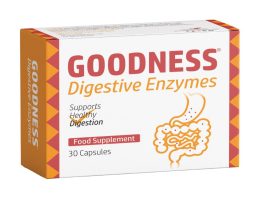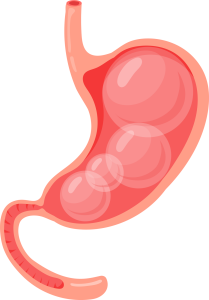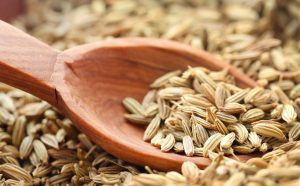Imagine starting your day with a warm, fluffy slice of bread, perhaps topped with butter or jam. Bread has been a staple in many diets for centuries, offering comfort and nutrition. However, it can have health implications, especially when consumed excessively or in certain forms. This article explores the common side effects of eating bread and offers practical solutions, including the use of Goodness Digestive Enzymes, to help you enjoy bread without compromising your health.
Common Side Effects of Eating Bread
Gluten Sensitivity and Celiac Disease
Gluten, a protein found in wheat, barley, and rye, is a common ingredient in bread. For some individuals, particularly those with celiac disease or non-celiac gluten sensitivity, gluten can trigger immune responses, leading to digestive issues, malabsorption, and fatigue. Celiac disease is an autoimmune disorder where ingesting gluten damages the small intestine, while non-celiac gluten sensitivity can cause similar symptoms without intestinal damage.
- Solution: Goodness Digestive Enzymes contain Bromelain, Papain, and Protease, which help degrade gluten peptides, making bread easier to digest and reducing symptoms of gluten sensitivity or celiac disease.
High Glycemic Index
The glycemic index (GI) measures how quickly carbohydrates raise blood sugar levels. Bread, especially white bread, often has a high GI, causing rapid spikes and crashes in blood sugar.
- Solution: To manage this, choose whole-grain or sourdough bread with lower GI values. Additionally, pairing bread with protein and healthy fats can help stabilize blood sugar levels. Amylase and Glucoamylase, two enzymes in Goodness Digestive Enzymes, break down complex carbohydrates more efficiently into simple sugars, stabilizing blood sugar levels and improving energy balance.
Low Nutrient Density
Commercial breads are highly processed and lack essential nutrients like fiber, B vitamins, and minerals.
- Solution: Choose whole-grain or sprouted bread, which is richer in nutrients. Cellulase, Hemicellulase, and Beta-Glucanase found in Goodness Digestive Enzymes enhance the breakdown of plant fibers in bread, increasing nutrient absorption and promoting gut health.
Weight Gain and Obesity
Eating too much bread, especially varieties made from refined flour can lead to overeating and weight gain. Bread is also frequently paired with high-calorie toppings, increasing the calorie load.
- Solution: Goodness Enzymes help regulate appetite and reduce the likelihood of overeating by improving digestion and nutrient absorption.
Digestive Discomfort
Bread contains fermentable carbohydrates that can cause bloating and gas in susceptible individuals, even without gluten sensitivity.
- Solution: Enzymes like Alpha Galactosidase, Xylanase, and Pectinase target these fermentable carbohydrates, reducing bloating, gas, and other digestive discomforts.
Preservatives and Additives
Commercial bread often contains preservatives and artificial additives to extend shelf life. These can cause allergic reactions or adverse effects in sensitive individuals.
- Solution: Goodness Digestive Enzymes’ comprehensive formula aids in detoxifying the gut, improving tolerance to processed foods.
Anti-Nutrients
Compounds like phytates and lectins in bread can hinder the absorption of minerals such as iron, zinc, and calcium, potentially leading to deficiencies.
- Solution: Enzymes such as Protease and Pectinase in Goodness Digestive Enzymes help counteract the effects of anti-nutrients, improving the absorption of essential minerals.
Gut Health and Inflammation
Refined bread can negatively affect gut health by promoting inflammation and altering the gut microbiota composition. Chronic inflammation is linked to various diseases, including cardiovascular issues and type 2 diabetes.
- Solution: Goodness Digestive Enzymes promote a balanced gut microbiota and reduce inflammation through enzymes like Bromelain and Papain, which have anti-inflammatory properties.
Tips for Healthier Bread Choices
- Opt for Whole-Grain or Sprouted Bread. These options provide more fiber and nutrients and lower glycemic impact than white bread.
- Check Labels: Avoid breads with added sugars, preservatives, and artificial additives.
- Pair Bread with Balanced Foods: Combine bread with protein, healthy fats, or vegetables to create a more balanced meal.
- Moderate Portion Sizes: Stick to smaller servings to avoid excess calorie intake.
- Use Digestive Support: Incorporate Goodness Digestive Enzymes to counteract potential digestive issues and improve nutrient absorption.
Addressing Bread Side Effects with Goodness Digestive Enzymes
Goodness Digestive Enzymes helps mitigate the side effects of eating bread by:
- Improving Digestion: These enzymes break down complex carbohydrates, proteins, and fats in bread, reducing bloating, gas, and other digestive discomforts.
- Enhancing Nutrient Absorption: The enzymes aid digestion, helping the body absorb more nutrients and counteracting the effects of anti-nutrients in bread.
- Supporting Gut Health: Regular use promotes a balanced gut microbiota, reducing inflammation and improving overall digestive health.
- Managing Gluten Sensitivity: Enzymes like Bromelain, Papain, and Protease degrade gluten peptides, making bread safer for individuals with gluten sensitivities.
Conclusion
Bread can fit into a healthy diet when consumed mindfully. Understanding its potential side effects and making informed choices—such as selecting nutrient-dense bread types and using Goodness Digestive Enzymes—can help you enjoy bread without compromising your health. With the right strategies, bread can remain a convenient and delicious part of your meals.
-
Product on sale
 Goodness Digestive EnzymesOriginal price was: $ 29.95.$ 25.95Current price is: $ 25.95.
Goodness Digestive EnzymesOriginal price was: $ 29.95.$ 25.95Current price is: $ 25.95.






